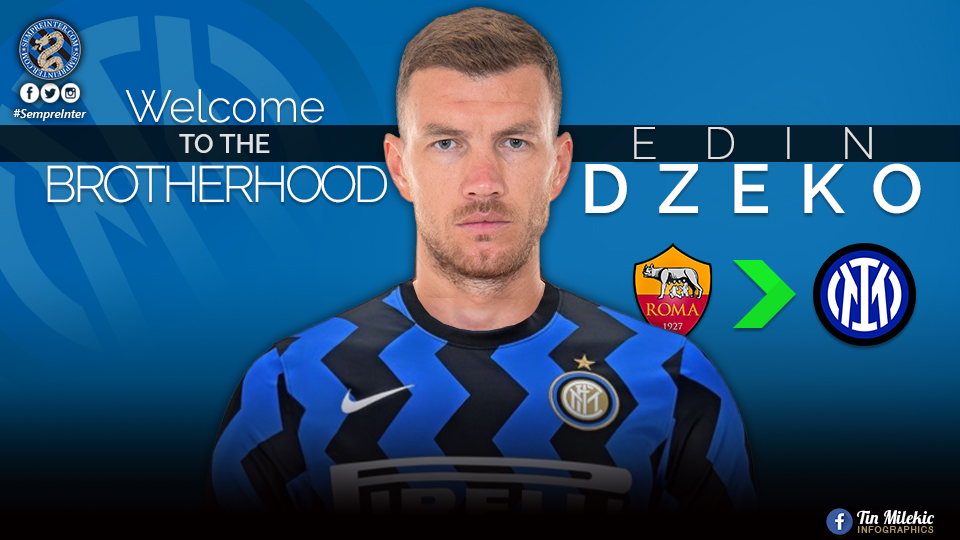This series takes a look at the latest signings and statistically analyzes those individuals’ contributions and how they compare to the current squad.
With the controversial loss of Lukaku, not to mention Hakimi before him, Inter Milan have quickly secured his replacement in Edin Džeko.
Normally, this series compares incoming players to similar players in the current squad, however, this article will compare Džeko to the out-going player he is meant to replace: Lukaku.
Both Strikers are so-called ‘target men’, so their shooting and chance-creating will be paramount, but we will also look at their abilities on the ball: aerial-winning, possession, and passing.
FBref.com was sourced for the stats and are provided in either “per 90 minutes” or as an overall percentage.
Attacking Stats:
The first and obvious comparison is goal contributions. The 28-year-old Lukaku provided 26 non-penalty goals and 12 assists (38) for Inter while the 35-year-old Džeko provided Roma with 14 and 4 (18).
Lukaku’s ‘goals+assists-penalties’ is a world class 0.85 per game; Džeko is a mediocre 0.62. What tells an even more interesting story is their comparative ‘non-penalty expected goals and expected assists’ per game: 0.80 to 0.78.
This implies that Džeko could potentially provide goals at Lukaku’s level, albeit unlikely since ‘non-penalty goals minus actual goals’ showed Lukaku at a +0.8 (being better than expected) to Džeko’s -3.8 (falling short).
Džeko actually attempts more shots per game than Lukaku (3.15 to 2.89, respectively), and they are rather equal with how many shots on target they get per match (1.34 to 1.39).
They differ a little in percentage on target though: Džeko’s 42.4% to 48.1%.
Being target men with larger statures, both are 6’3” (192cm), their aerial-duels are important. Džeko is the clear winner here at 63.8% success to Lukaku’s 38.5%.
Also surprising is their near-equal possession stats: they both successfully receive the ball 59% of the time; successfully dribble the ball past defenders most of the time (Džeko’s 50% to Lukaku’s 56%); progress the ball up-field similarly (Džeko’s 59.8 yards per game to Lukaku’s 69.6); and are even displaced from the ball nearly equally (2.04 to 2.11, respectfully).
As for passing, Lukaku is more successful at 72.1% to Džeko’s 66.5%, and they complete nearly the same amount per game (17.2 to 17.6), but Džeko gets his passes blocked quite a bit more than Lukaku (1.74 per game to 1.22) while Lukaku gets intercepted a little more (0.89 per game to 0.75).
So is Edin Džeko a good replacement for Lukaku?
As a €2,000,000 stop-gap for the target man role, then the numbers say potentially. Zapata, Vlahovic, and Kean might all be younger and equal options, but they all cost too much, only Zapata has been as consistent as Džeko.
Džeko’s 0.78 ‘non-penalty expected goals plus expected assists’ per match is close to Lukaku’s 0.80, but the reality of actual ‘non-penalty goals plus assists’ (not just expected) is a big step down (0.62 to Lukaku’s 0.85).
If Inter Milan can get Džeko to put away those expected goals, and Džeko plays 1000 more minutes to match Lukaku, then the math says he is a potential bargain.
However, considering he is already 35, it’s hard to assume his consistency will remain and it’s unlikely he will make up the difference to catch Lukaku’s output.
The 20 goal and assist difference between them means that Inter will need other players to help Džeko out.
Previous article in this series:





